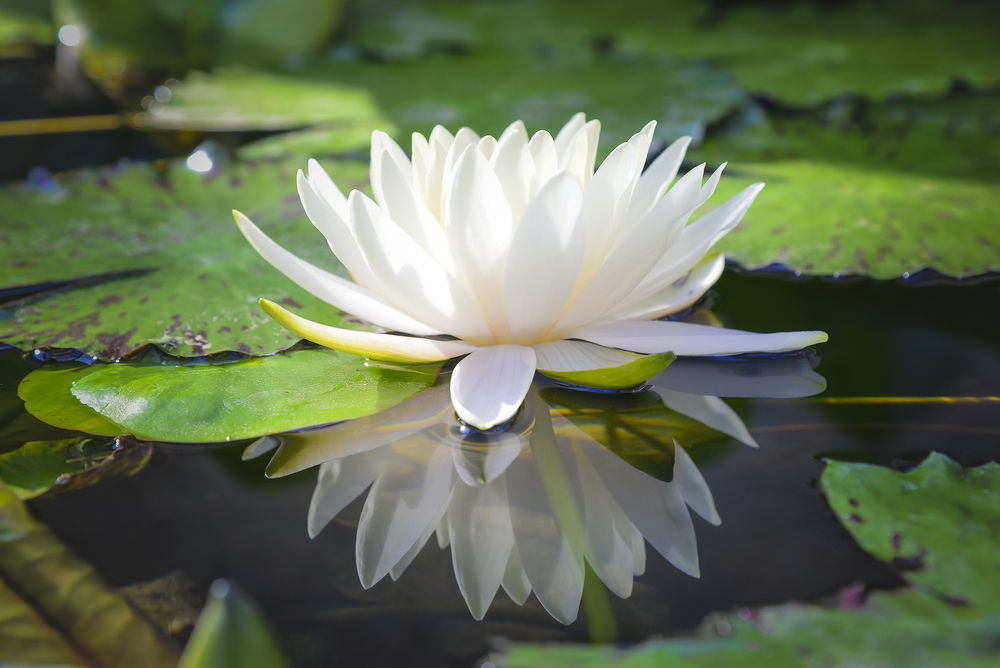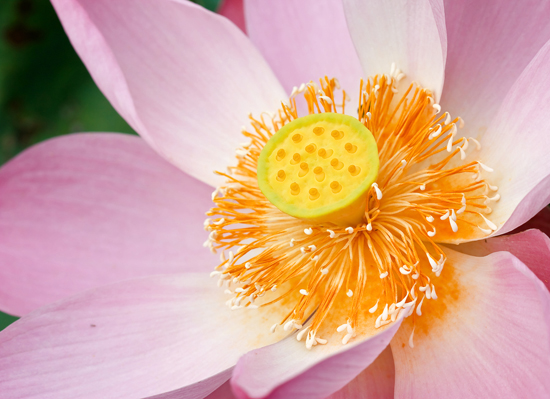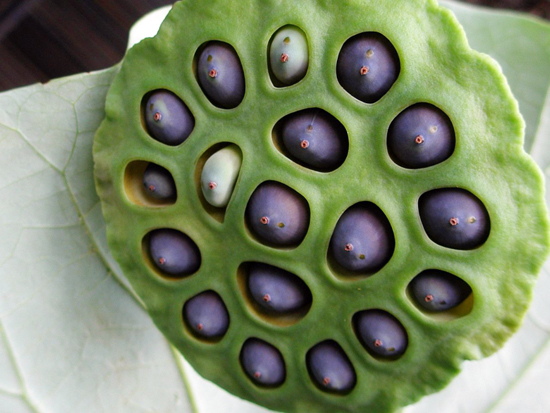National Symbols: National Flower
Lotus (common name)
Nelumbo nucifera (scientific name)
Designation
Official
Also Known As
Indian lotus, sacred lotus, bean of India
Classification
- Kingdom: Plantae
- Division: Magnoliophyta
- Class: Eudicots
- Order: Proteales
- Family: Nelumbonaceae
- Genus: Nelumbo
- Species: N. nucifera
The Flower
The lotus is an aquatic flowering plant that grows in lakes, ponds, canals and slow-moving rivers. It has large, round leaves that float on the water. Flowers are varying shades of pink, often fading to paler pink or white as they age. Buds are pointed, much wider at the stem than at the tip. The blooms open almost flat, though the petals' tips turn upward. The flowers have multiple petals, and a prominent cluster of yellow stamens at the center. Individual petals are often much paler near the flower's center than at the tip. As a lotus flower matures, a developing seed capsule becomes visible at its center. When the flower finally drops its petals, it leaves the flat, bell-shaped seed capsule behind. The visible end of the capsule has numerous noticeable holes, each containing a round lotus seed. The capsules and seeds are green initially, but rapidly turn brown. Leaves are often extremely large and round, and have a slightly wavy to ruffled edge.
Physical Details
Duration: Perennial
Plant: Aquatic flowering plant
Mature Height: Average 1.5-2 m (5-6.5 ft)
Flowering: Year-round
Flowers: Averages 22 cm (9 in) wide, 15 to 30 pointed oval petals, over 100 stamens.
Flower Color: Shades of pink to white
Leaves: 30-60 cm (1-2 ft) or more wide, bright to medium green round leaves with crimped edges.
Fruit / Seed Color: Tan
Habitat
Location: Lakes and rivers with still water
Range: Asia, from Iran to Japan and into northern Australia.
Trivia
- Nelumbo nucifera was previously classified as Nelumbium speciosum or Nymphaea nelumbo. The name of the genus comes from the Sinhalese word for water lily, nelum.
- Lotus flowers are strongly associated with both Buddhism and Hinduism. In India, some Hindu gods are typically portrayed as sitting or standing on lotus flowers.
- Lotuses—like warm-blooded animals—maintain a constant temperature. They stay between 30-35 degrees Celsius (86 and 95 degrees Fahrenheit) even when the temperature of the air around them is much lower. As the air around a flower cools, the lotus starts to absorb more oxygen and release more carbon dioxide, a way for the plant to convert carbohydrates to heat energy.
Copyright © 1993—2025 World Trade Press. All rights reserved.

 India
India 

